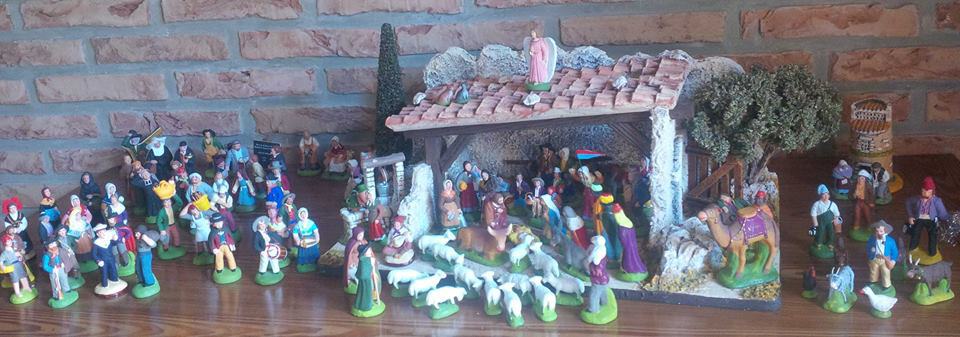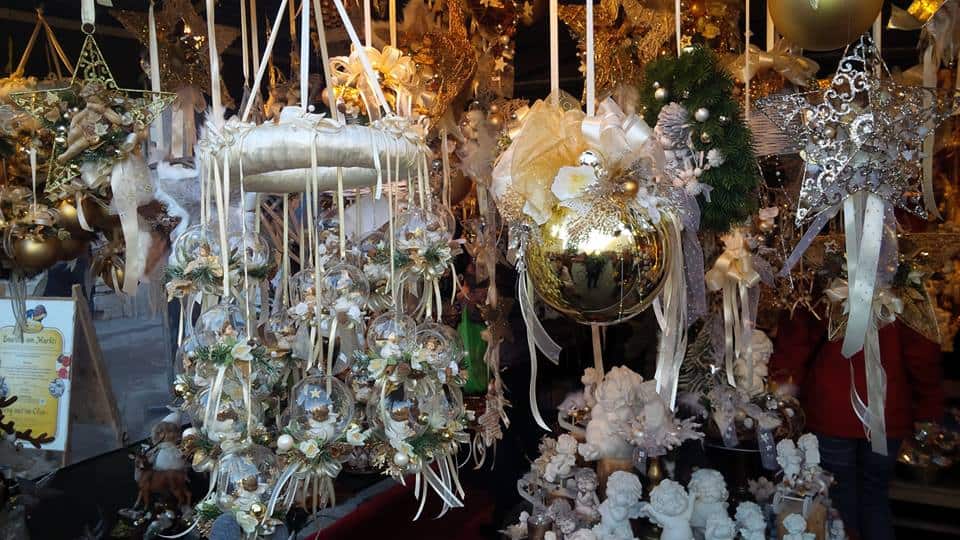Holiday Traditions Around The World – Part 2
Let’s finish our world tour of holiday traditions… Are you feeling festive yet?

Central America
In Guatemala’s villages, local men in devil costumes appear on the streets and chase children during the first week of Advent. The devilish period ends on December 7 with a folk ritual known as “La Quema del Diablo” (The Burning of the Devil), where people pile objects they no longer want or need in front of their houses, scatter firecrackers on top of the heap, and set fire to it.
At Christmas in Nicaragua, there is a tradition known as la Gritería at 6 pm on December 7th. A common yell is heard in different cathedrals and churches: “Quién causa tanta alegría?” (Who causes so much happiness?). The response is “La Concepción de María” (Mary’s Conception) with fireworks and firecrackers. “La Purísima” (The Purest of All) happens the next day, a celebration of the purest conception of the Virgin Mary, the feast of the Immaculate Conception. Chairs are placed in front of a richly decorated altar in a corner of family homes with a statue of the Virgin Mary’s image to celebrate her, and guests pray to the virgin and sing traditional songs, while the host serves fruit, sweets, drinks, sugarcane, and other delicacies.
Native to Mexico, the poinsettia was originally cultivated by the Aztecs, who called it Cuetlaxochitl (“flower which wilts”). The plant’s brilliant red color symbolized purity for the Aztecs, and they often used the plant to reduce fever. A US ambassador to Mexico, Joel Roberts Poinsett, was responsible for bringing this plant to the US. In Oaxaca, Mexico, “The Night of the Radishes” is one of the annual Christmas customs On December 23rd. Competitors carve nativity scenes from large radishes, which are proudly displayed at the Christmas market. Oaxaca has land dedicated to cultivating special vegetables just for this event. Another tradition in Mexico is “La Posada”, where groups of people go from door to door looking for refuge for Mary and Joseph; they are denied entry until finally being welcomed into homes to celebrate.
England and Ireland
Many Christmas traditions followed in the US come from England. However, Christmas was not always a cheerful and festive day in the UK. Puritan Oliver Cromwell actually made Christmas celebrations illegal in England from 1647-1660, claiming it was immoral to hold a celebration on one of the year’s holiest days. The celebration of Christmas in England had been essentially relegated to minor status, until the 1840’s when Charles Dickens’ “A Christmas Carol” revived some of the sense of festivity and re-popularized some traditions that feel like they have always been around, such as the Christmas tree.
According to old English folk tales, the Devil died when Jesus was born; some towns developed a tradition of ringing the church bells near midnight on Christmas Eve to announce the Devil’s demise. In England this custom was called tolling or ringing “the Devil’s knell.”
In Ireland traditionally, a candle would be put in the window as a welcoming beacon for Mary and Joseph. This tradition seems to be waning in modern times however. The 26th of December, St. Stephen’s Day, is also very important in Ireland. It normally includes visits from family and friends and another festive meal.
As they say in the UK: Happy Christmas!
Spain
¡Feliz Navidad! If you love Christmas, we recommend a visit to Spain or any number of Latin American countries, where Christmas is a nearly one-month long event, filled with feasting, music, and pageantry. The Christmas traditions in Spain are almost too many to enumerate. Some of the highlights include the beginning of the celebration of Christmas on December 8th, which is The Feast of the Immaculate Conception. There are activities and celebrations at churches and cathedrals all season long, with Christmas Eve, or “Noche Buena” (the good night) celebrated as the first day of Christmas. Families feast around nativity scenes, eating traditional foods. During the 12 days of Christmas, Spaniards celebrate the journey of the Three Wise Men. On the last night, January 6th, children place their shoes out with straw to feed the hungry camels. The following morning, the straw has been eaten and is replaced with small gifts.
Christmas customs don’t come much weirder than in Catalonia, where “el Caganer” ( the Christmas Crapper) is an annual tradition. Statues of famous figures doing their bathroom business are believed to bring hope, prosperity, and fertility in the year to come!
Continental Europe
With its wide range of cultures and history, it’s to be expected that countries in Europe will have a variety of holiday traditions.

In Italy, a witch or old woman called “La Befana” flies around on her broomstick on the night of January 5th, bringing gifts to worthy children and lumps of coal to the naughty ones. Her name may derive from the Italian word for Epiphany, La Festa dell’Epifania.
In Greece, Orthodox Christmas is typically on the 7th of January, at the end of the Advent. However, according to Greek legend, malicious goblins called Kallikantzari come up from their underground homes on December 25th, and play tricks on humans until the 6th of January. Amusingly, Greeks often will put a colander on their doorsteps to ward off these goblins, who get distracted trying to count the holes. They are unable to count past 2, because counting to 3 evokes the Holy Trinity which destroys them.
The celebration of Christmas in France varies by region. Most provinces celebrate Christmas on the 25th of December. However, in eastern and northern France, the Christmas season begins on December 6th, with St. Nicholas Day (la fête de Saint Nicolas). In Lyon, December 8th is la fête de lumières, when candles are lit in windows to light up the city. Strasbourg, near the German border, is famous for its beautiful Christmas market, similar to those found in Germany. The Christmas tree, called sapin de Noël, is the main decoration in homes, streets, shops and offices. Another important aspect of French Christmas celebrations is the nativity scene (la crèche), displaying figurines called santons, put up in many homes and in churches. Churches sometimes even display living crèches. On Christmas Eve night, French children leave their shoes in front of the fireplace for le Père Noël (Father Christmas, the equivalent of Santa Claus) to fill with gifts. The Père Fouettard (the equivalent of the Grinch, or the Bogeyman), is also out, giving out spankings or coal instead of gifts to bad children. This is certainly incentive to behave! Christmas Eve usually has a huge family feast, called le réveillon, the culinary high point of the season. Dishes include oysters, boudin blanc, smoked salmon, foie gras, stuffed capon, goose or turkey and the bûche de Noël (Yule log), a log-shaped cake, the traditional Christmas dessert. Joyeux Noël !
Here’s some interesting trivia on Christmas in the USA.
Some believe that Franklin Pierce, the 14th President of the U.S., was the first President to put a Christmas tree in the White House in 1853; others believe it was Benjamin Harrison in 1889. The General Grant Tree in California’s King’s Canyon National Park was proclaimed “the Nation’s Christmas Tree” by U.S President Calvin Coolidge in 1926. The giant sequoia, which stands over 300 feet tall and estimated to be over 1,600 years old, is the third largest tree in the world. Alabama was the first state to declare Christmas an official holiday, in 1836. It wasn’t declared a national holiday in the US until 1870.
The candy cane’s origins can be traced back to Europe in approximately 1670, but this minty treat didn’t appear in the US until the 1800s. At that time, they were generally all white, until the 1900s, when they took on a shape representing Jesus’ hook for shepherding his lambs and colors representing purity (white) and Christ’s sacrifice (red).
The song “Rudolph the Red-Nosed Reindeer” was invented by Montgomery Ward copywriter Robert L. May in 1939, as a way to lure customers into the store. Since then the iconic reindeer has become a Christmas character for children throughout the US. Meanwhile the iconic Christmas song “Jingle Bells” was composed in 1857 by James Pierpont and was actually written for Thanksgiving, originally called “One Horse Open Sleigh.”
The idea for electric Christmas light displays was first introduced by Thomas Edison’s assistant, Edward Johnson in 1882. But it was American Ralph Morris who invented the type of lights we use today, adapting the lights used in telephone switchboards in 1895.
The image of the jolly old elf we know today as Santa Claus was created by American artist Haddon Sundblom for a Coca-Cola ad, but early illustrations of Santa Claus pictured him as a stern, commanding disciplinarian holding a birch rod.
Merry Christmas!
Fun Facts About Christmas
The origins of Christmas can be traced back to ancient Pagan celebrations such as Deus Sol Invictus (observed Dec 25), the Kalends (Jan 1-5), and Saturnalia (Dec 17-23). The Christian Church disapproved of these festivals and co-opted the holidays by declaring Dec 25 as Jesus’ birthday. Pope Julius I, the bishop of Rome, officially proclaimed December 25 the official celebration day for Jesus’ birthday in 350 AD.
It takes Christmas trees around 15 years to grow to 6-8 feet. There are approximately 30-35 million Christmas trees sold annually. The artificial Christmas tree originated in Germany in the 1800s, and was made from goose feathers dyed green. These days, artificial Christmas trees are much more realistic looking! The Canadian province of Nova Scotia leads the world in exporting Christmas trees (together with lobster and wild blueberries).
Christmas pudding was originally more than just a tasty treat. Small items such as coins (for wealth) and buttons (symbolizing bachelorhood) were put inside, and supposedly foretold what the New Year would bring.
Mistletoe was held sacred by the Norse, the Celtic Druids, and Native American Indians, because it remains green and bears fruit during the winter. Druids thought the plant had the power to cure infertility and nervous diseases, and to ward off evil.
Whatever and however you celebrate, we hope you enjoy the holidays!
Kwanzaa
Kwanzaa is a seven-day festival, primarily celebrated in the US and created in 1966 by Dr. Maulana Karenga, with the concept of bringing African-Americans together to remember their culture. It takes place from December 26th to January 1st, and celebrates African and African-American culture and history. The name Kwanzaa comes from the phrase matunda ya kwanza which means “first fruits” in the Swahili language (an Eastern African language spoken in countries including Kenya, Uganda, Tanzania, Mozambique and Zimbabwe).
During Kwanzaa, a special candle holder called a kinara is used. A kinara hold seven candles called mishumaa saba, three red ones on the left, three green ones on the right with a black candle in the center. Each night during Kwanzaa a candle is lit. The black candle is lit first and then it alternates between the red and green candles starting with the ones on the outside and moving inwards. This is a similar practice to the lighting of the menorah in the Jewish Festival of Lights, Hanukkah.
The seven days and candles in Kwanzaa represent the seven principles of Kwanzaa: umoja (unity), kujichagulia (self-determination), ujima (collective work and responsibility), ujamaa (cooperative economics), nia (purpose), kuumba (creativity), and imani (faith).
There are other symbols used in Kwanzaa: mkeka (the mat, symbolizing experiences and foundations), kikombe cha umoja (the unity cup, representing family and community), mazao (the crops – fruit and vegetables from the harvest), muhindi (the corn, representing the future as well as Native Americans), zawadi (gifts given to children, normally educational and reminding them of their African heritage), bendera (a flag with three horizontal stripes of black, red and green), and nguzo saba (a poster of the seven principles of Kwanzaa).
There’s also a special greeting used during Kwanzaa in Swahili: Habari gani! The reply would be whatever the principle for that day is.



